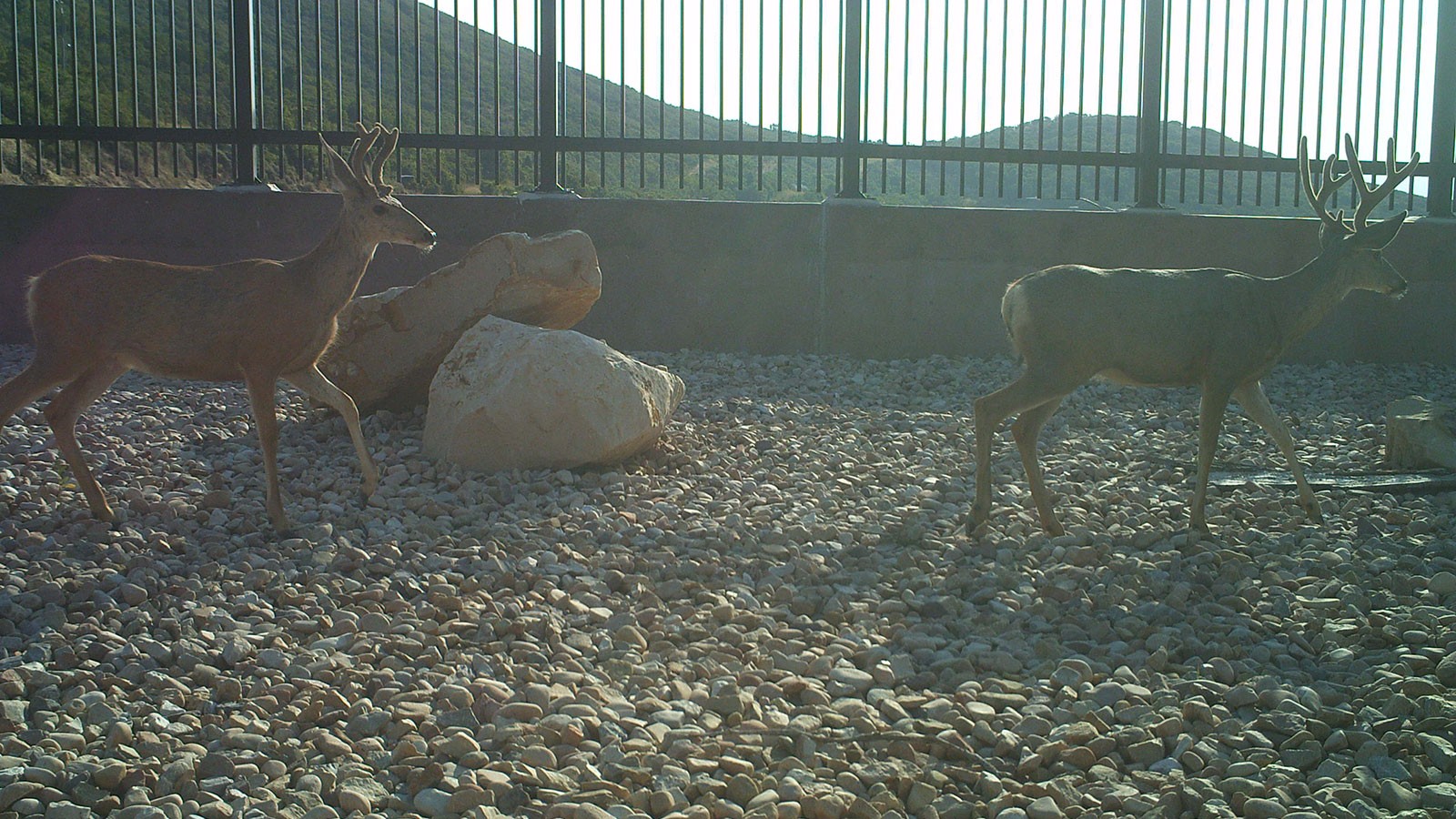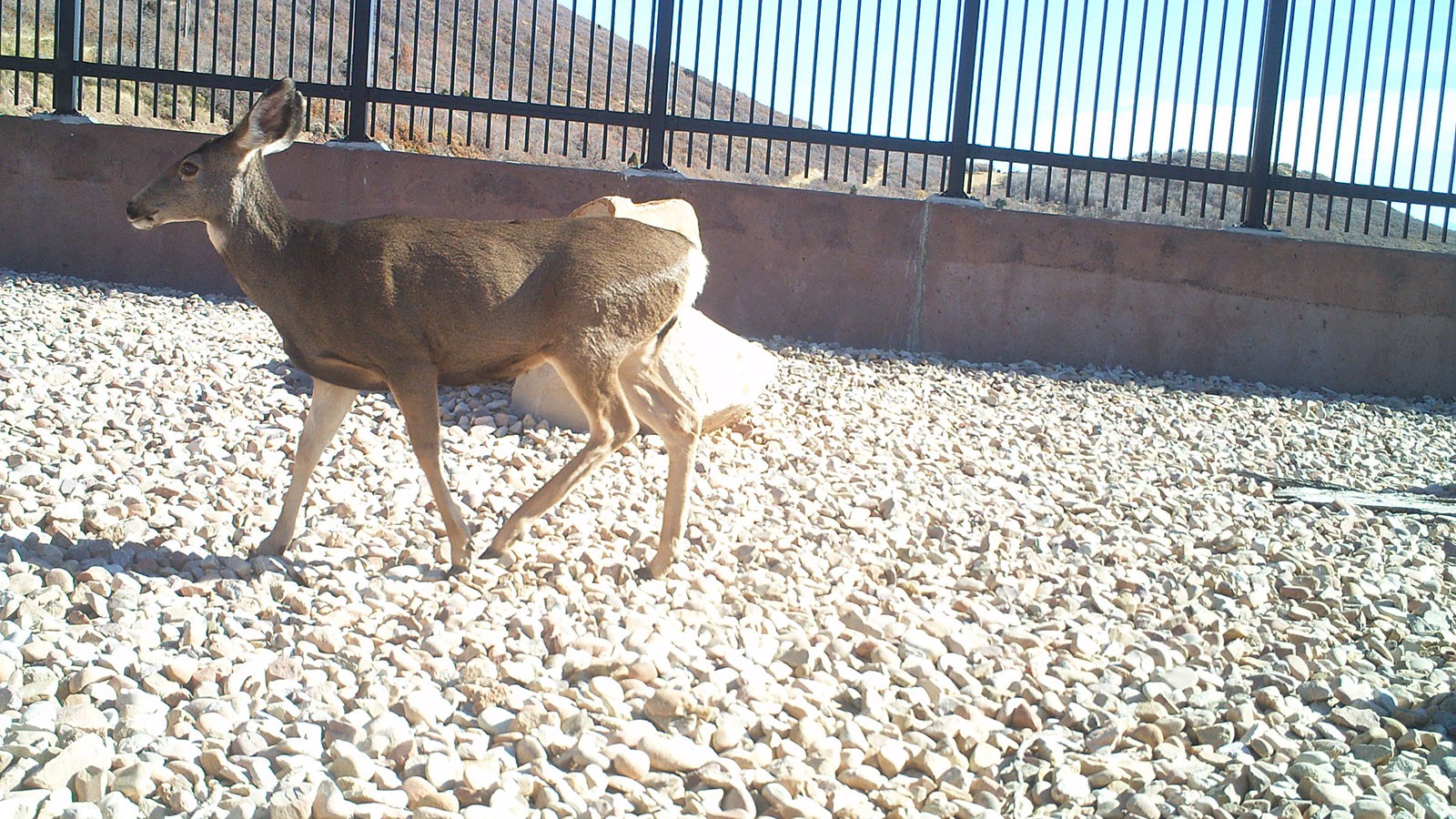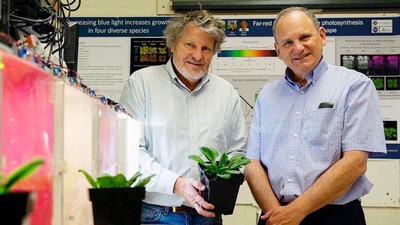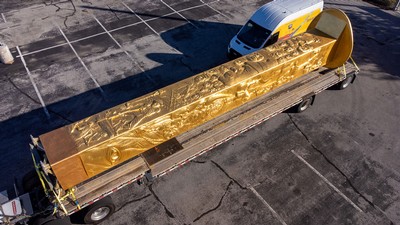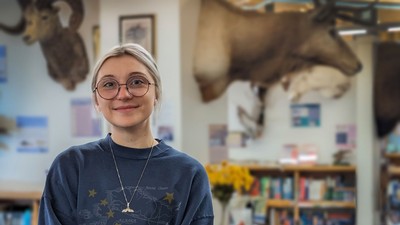Building Bridges: USU Natural Resources Researchers Monitor Wildlife Overpass Usage
In May 2020 Nicki Frey, an Extension associate professor in the S.J & Jessie E. Quinney College of Natural Resources, and her undergraduate researcher, Natalie D’Souza, began monitoring wildlife use of a new overpass crossing I-80 in Parley’s Canyon in Summit County, Utah.
The overpass was created in 2018 in response to increased vehicle traffic through the canyon and increased wildlife vehicle collisions. More narrow and higher above the freeway than most wildlife crossing structures in the country, many people believed that it would be years before the overpass was used by local wildlife, if at all. Frey and D’Souza are excited to report that isn’t the case at all.
Since May, Frey and D’Souza have documented more than 1,200 instances of wildlife use, of 17 different mammal species and at least five bird species. Importantly, deer and elk are using the overpass, which has positive implications for migration. Additionally, black bear, mountain lions, bobcats and coyotes also frequent the overpass.
“We are completely amazed by the number and diversity of wildlife that have used the overpass since we started monitoring it in May,” Frey said.
She expected to get one or two wildlife ‘captures’ each week. Instead, she stated that they “find that some smaller wildlife, such as squirrels, use the structure as part of their habitat, rather than just to cross the highway”.
Part of I-80, Parley’s Canyon sees an average of nearly 80,000 vehicles a day. In the two years leading up to the opening of the overpass, over 100 wildlife-vehicle collisions occurred in Parley’s canyon. As the cities along the Wasatch Front grow, the traffic is increasing annually. A deer-car collision can cost $6,500, an elk collision about $17,500. The overpass could reduce the cost of vehicle collisions by $325,00-$875,00 annually.
In addition to increasing human safety and reducing property damage, the overpass helps wildlife species. By removing the barrier of I-80, wildlife have an increased ability to safely migrate across the canyon. Additionally, without a barrier, animals have access to more resources. For example, animals with larger home ranges, such as bears, coyotes, deer and elk can incorporate habitat on both sides of the highway into their seasonal use.
For this phase of the study, an array of trail cameras record all wildlife (and humans) that approach or use the overpass. Additionally, UDOT has 3 cameras that automatically download data to a remote server. D’Souza regularly visits the cameras to download data and check their status. Then she rigorously examines thousands of photos and hours of video footage to document the wildlife use. She also records if an animal approaches and crosses the overpass, approaches and turns away, or even approaches, begins to cross, and then turns away. They’ll examine these factors to determine what encourages the use of the overpass.
Animals must learn to use an overpass, and biologists expect individuals to approach the overpass several times before they have the nerve to cross it. Instead, D’Souza reports most animals make a complete crossing.
“I expected most footage to have animals approaching and showing hesitation,” D’Souza said. “But our footage shows otherwise. Most animals just walk in and cross over. I was surprised.”
For the next phase of the study Frey and her lab will compare the use recorded by D’Souza to data collected on other wildlife crossings (e. g. overpasses, underpasses) throughout Utah. Through this study she will determine what elements of the wildlife overpass set it apart from over crossing structures.
Two deer using the animal overpass in I-80 in Parley's Canyon in Summit County, Utah.
Since May 2020, USU researchers Nicki Frey and Natalie D'Souza have documented more than 1,200 instances of wildlife use, of 17 different mammal species and at least five bird species such as this deer using the crossing.
CONTACT
Nicki Frey
Associate Professor
S.J. & Jessie E. Quinney College of Natural Resources, Extension
435-559-0360
nicki.frey@usu.edu
Traci Hillyard
Administrative Assistant
College of Science
435-797-2478
traci.hillyard@usu.edu
TOPICS
Research 881stories Extension 459stories Wildlife 141stories Animals 92storiesComments and questions regarding this article may be directed to the contact person listed on this page.


